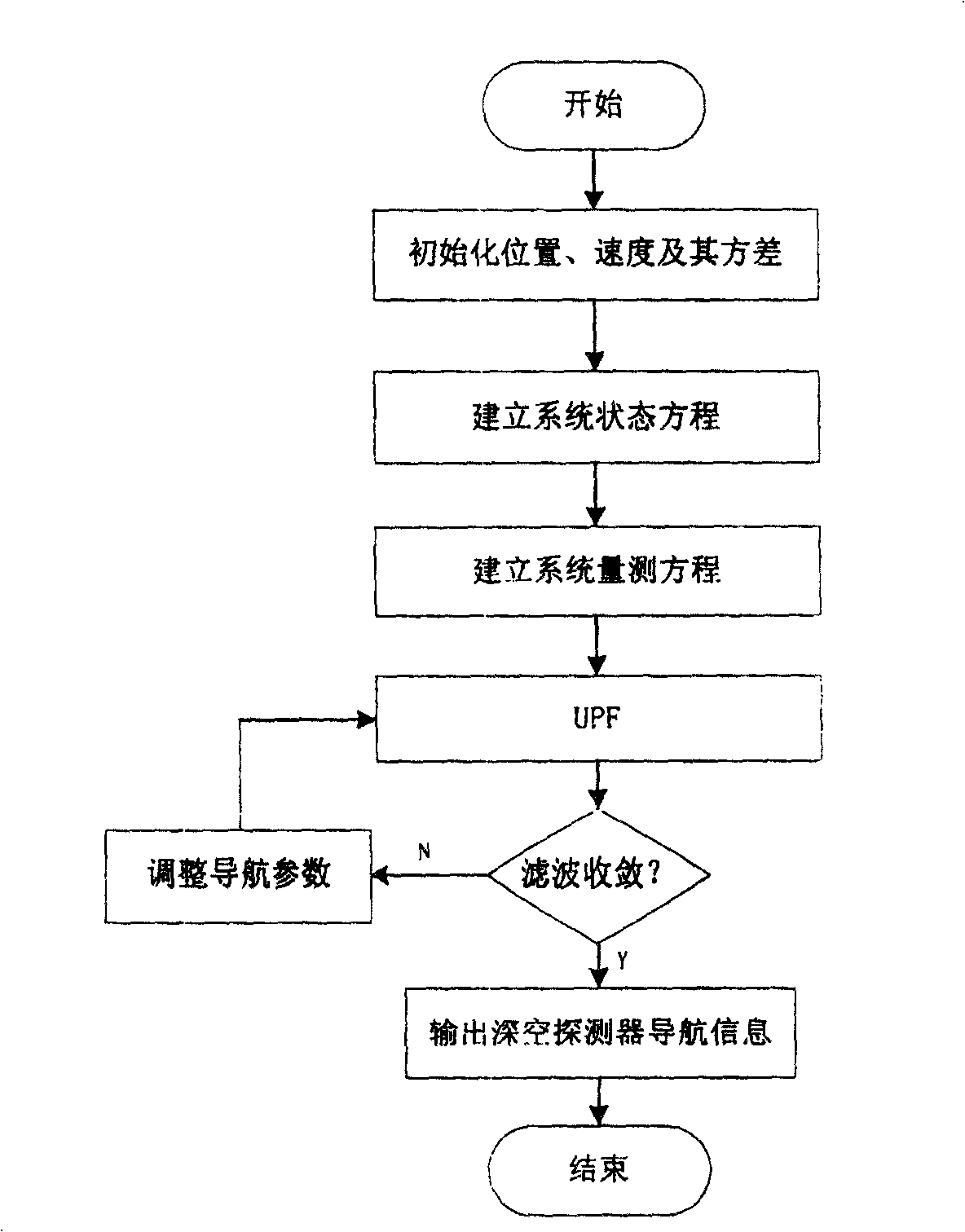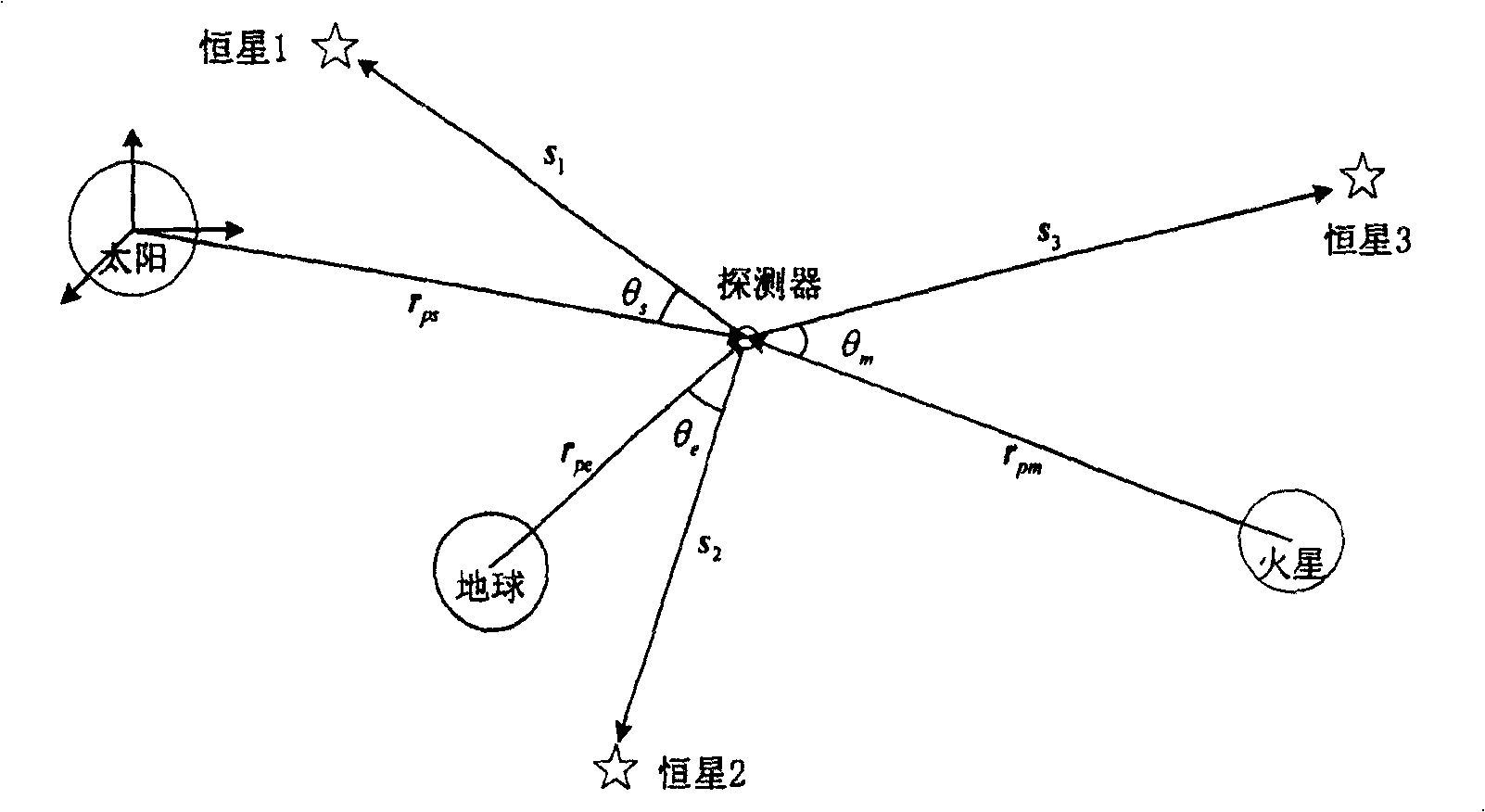Deep space probe UPF celestial self-navigation method based on starlight angle
A technology of deep space detectors and starlight angular distance, applied in the field of aerospace navigation, can solve the problems of difficult control and low navigation accuracy, and achieve the effect of improving utilization efficiency
- Summary
- Abstract
- Description
- Claims
- Application Information
AI Technical Summary
Problems solved by technology
Method used
Image
Examples
Embodiment Construction
[0022] Such as figure 1 and figure 2 Shown, the deep space probe that present embodiment adopts is a kind of Mars probe, and concrete method of the present invention is as follows:
[0023] 1. Establish the state equation (i.e. the multi-body orbital dynamics model) of the Mars probe on the transfer orbit, and the state model among the present invention is considered to be a circular restricted four-body model. The circular restrictive four-body model needs to consider the interaction among the probe, the central gravity of the sun, the central gravity of Mars and the central gravity of the earth, and the influence of other perturbations is not considered.
[0024] Assume that Mars moves in a circular motion at a uniform speed around the sun, with a radius equal to the average distance r between the sun and Mars sm ; The earth moves in a uniform circular motion around the sun with a radius of 1 astronomical length unit AU. In the general restricted four-body model, the sta...
PUM
 Login to View More
Login to View More Abstract
Description
Claims
Application Information
 Login to View More
Login to View More - R&D
- Intellectual Property
- Life Sciences
- Materials
- Tech Scout
- Unparalleled Data Quality
- Higher Quality Content
- 60% Fewer Hallucinations
Browse by: Latest US Patents, China's latest patents, Technical Efficacy Thesaurus, Application Domain, Technology Topic, Popular Technical Reports.
© 2025 PatSnap. All rights reserved.Legal|Privacy policy|Modern Slavery Act Transparency Statement|Sitemap|About US| Contact US: help@patsnap.com



